During class read alouds it is not uncommon for us teachers to shush our students, redirect them to raise their hand, ask them not to shout out, move their spot on the carpet if they’re talking, give them a hand signal that means stop…
Yet the very thing students are “shouting out” or talking to their friends about, are the very things we are trying to get them to do as readers! So we incessantly shush them when they are organically making a prediction, connection or inference about a story… then later on in the day or week we give them inauthentic reading comprehension activities to try to illicit the very skills we shut down earlier!
So when I started the year this year I vowed not to shut down the thinking that was being shared during a read aloud, but after the first few times refraining from shushing and redirecting I realized 23 students sharing their thinking out loud at the same time made it very difficult for everyone to hear the story.
Then I remembered a post I read about back channeling in the classroom so I decided to give that a try. I was transparent with my students and told them I wanted them to be able to freely share their thinking about the story we were reading, but in order to do that in a way where everyone can still hear the story we will be communicating our thinking not with our voices, but through something called a back channel. We tested out back channeling in a low stakes way by chatting about our Eid vacations.
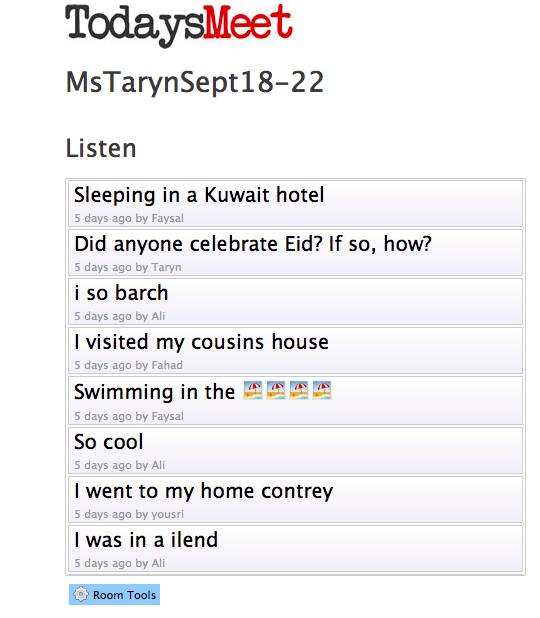
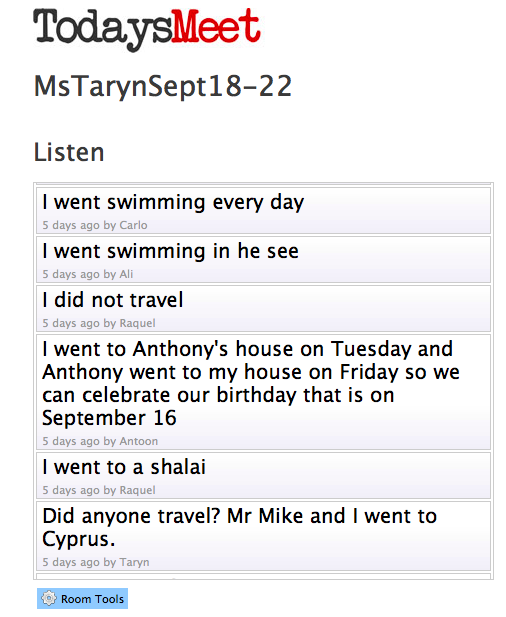
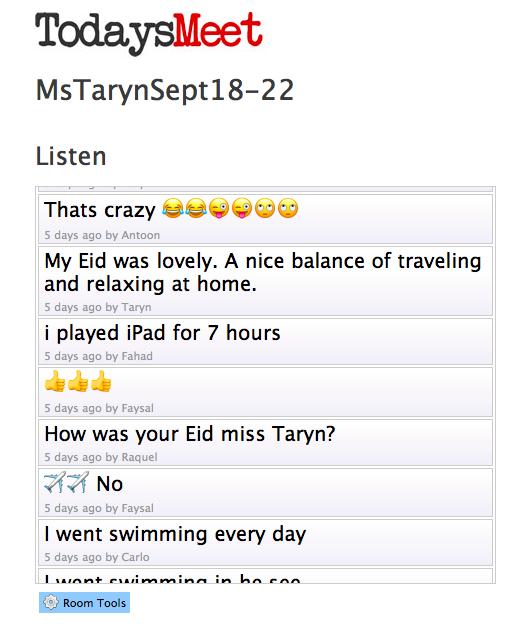
Once students were comfortable with back channeling, we tried it out during a read aloud. The results were amazing!
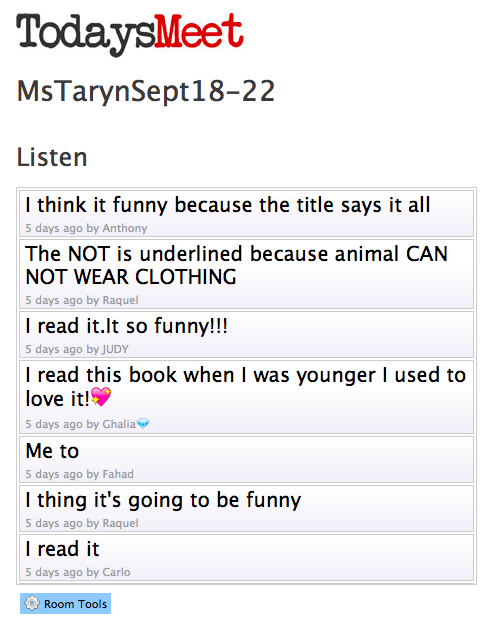
Students shared their personal connections:



Students shared their connections with other texts:

Students shared their opinions:



Students shared predictions: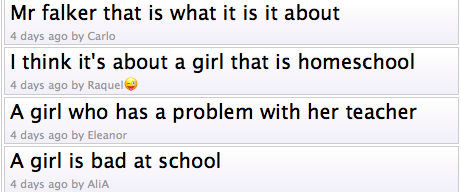

Students shared inferences:


Students shared their questions:

At the end of every day I would go through the back channel and document the learning that had taken place. After a few days I had learned SO much about my students as readers:
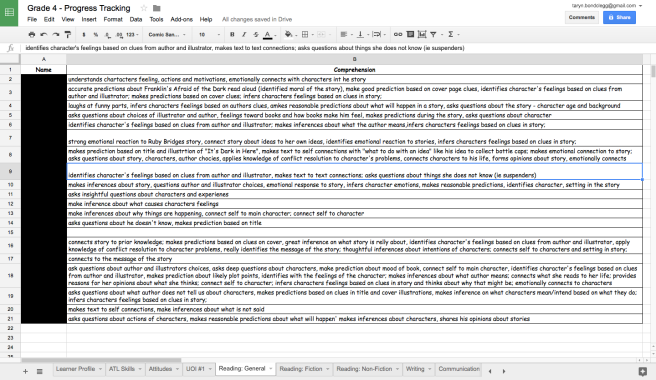
Outside of sharing their thinking about stories, it was also great to see student interacting with each other:



And communicating their meaning with multimodalities – not only words, but using emojis too:
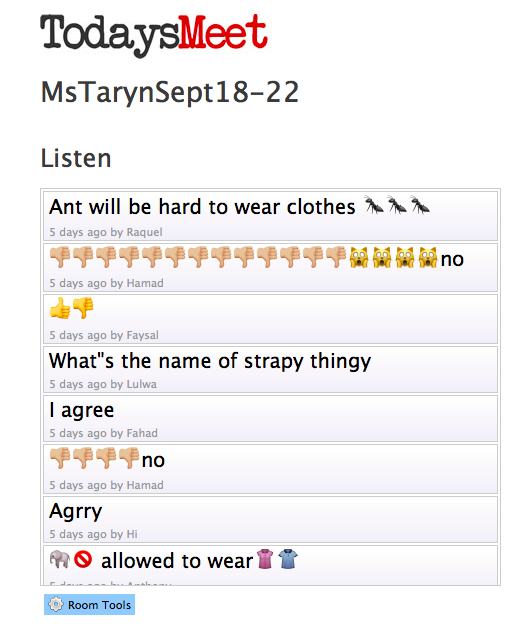
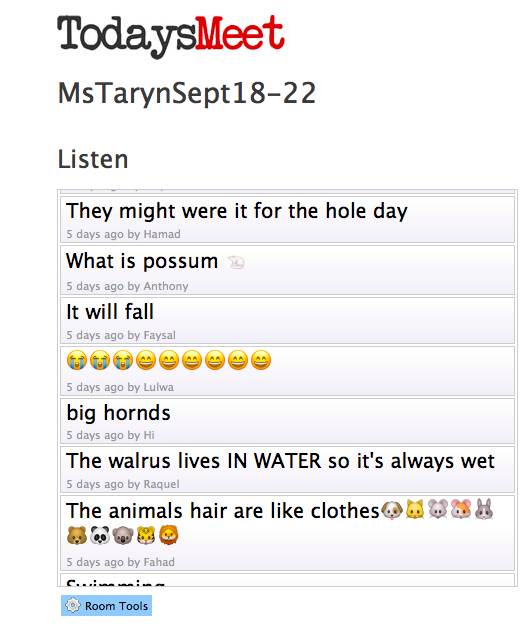
Now anytime we do a class read aloud, students hop on the back channel! We have also branched out to using a back channel when watching films and analyzing photos. It has been amazing way for student to share their thinking with one another and an amazing way for me to capture their thinking in an organic, authentic way.
I shared this openly with my students. I told them the back channel was allowing me to learn so much about them as readers that we would probably never have to do a “reading comprehension activity” this year.
They cheered.
So did I.